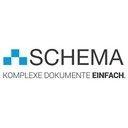Component Content Management
Optimizing Technical Documentation with Component Content Management
In the realm of technical documentation, efficient management of content is essential to ensure accuracy, consistency, and productivity. Component content management (CCM) has emerged as a powerful solution that offers numerous benefits to organizations, particularly those dealing with complex documentation needs. This article explores how CCM, specifically XML-based component content management, can streamline content workflows, automate content reuse, and deliver structured content management for enterprise organizations.
Streamlining Content Workflows with Component Management
One of the primary advantages of component content management for technical documentation is its ability to streamline content workflows. With CCM, technical writers and content creators can break down content into smaller reusable components, such as paragraphs, sections, or even individual sentences. This modular approach enables teams to collaborate more effectively, allowing multiple contributors to work simultaneously on different components without conflicts. By eliminating version control issues and reducing duplication, CCM promotes efficiency and accelerates content development processes.
Automated Content Reuse in Component Management
Automated content reuse is a game-changer in the realm of technical documentation, and component content management systems excel in this area. Through XML-based CCM, organizations can create a central repository of approved content components that can be reused across various documents and projects. This means that instead of recreating content from scratch, writers can easily locate and reuse existing components, saving time and effort. Moreover, any updates or revisions made to a component are automatically propagated throughout all documents where it is used, ensuring consistency and accuracy.
Structured Content Management for Enterprise Organizations
Structured content management is crucial for enterprise organizations that generate a large volume of technical documentation. CCM provides a systematic approach to content organization, utilizing metadata and tagging to classify and categorize components. This structured approach ensures that content is easily searchable, making it simpler to locate and retrieve specific information. Furthermore, structured content management facilitates content localization and translation, as individual components can be identified and translated independently, resulting in faster and more accurate translations.
Component Content Management System Benefits
Implementing a component content management system offers a range of benefits for organizations. First and foremost, it promotes content consistency by enforcing standardized templates, styles, and terminology, ensuring a cohesive and professional appearance across all documentation. Additionally, CCM enables content reuse, reducing redundancy and improving content quality. By leveraging XML-based component content management, organizations can future-proof their documentation, making it easier to adapt and repurpose content for emerging formats and platforms.
Conclusion
Component content management, specifically XML-based CCM, revolutionizes the way technical documentation is created, managed, and reused. By streamlining content workflows, automating content reuse, and providing structured management for enterprise organizations, CCM enhances productivity, accelerates content development, and ensures consistency and accuracy. Embracing a component content management system unlocks numerous benefits for organizations striving to optimize their technical documentation processes and stay ahead in today's fast-paced digital landscape.

4 Review
Enterprise XML Content Management, Unified XML Workflows, Single-Source Multi-Channel Publishing, DOCX→XML Conversion & Import, High-Quality PDF Generation, Open Architecture, Open-Source

4 Review
The DCP CCMS is built upon a native XML database, providing a customizable platform for content management, transformation, reuse, search and retrieval, workflow, and single-source publishing.


4 Review
XDocs DITA Component Content Management System (CCMS) is the leading single vendor solution for organizations who are looking to improve and enhance their information workflow.


3 Review
Storyblok helps your team to tell your story and manage content for every use-case: corporate websites, e-commerce, helpdesks, mobile apps, and screen displays. Storyblok is a Headless CMS with a Visual Editor for developers, marketers & content editors. The Problem: Managing digital content with a headless CMS can be a difficult task. Without a visual…
Read more about this company

3 Review
GraphCMS is the first GraphQL-native Headless CMS (Content Management System) that helps teams deliver better digital experiences across all platforms at scale. From high-traffic publishing and marketing websites, to multi-language e-commerce platforms, to interactive mobile apps, and voice apps – GraphCMS is the solid content infrastructure used by…
Read more about this company

3 Review
Our versatile SaaS-based software, RSuite® Standard, gives users the flexibility, agility, and scalability needed to easily manage high-volumes of documents and data on a component-level. RSuite Standard provides a secure platform where users can store, access, reuse, and approve content with automated workflows. As a result, organizations experience…
Read more about this company

3 Review
Our flagship product, easyDITA, is a DITA standards-based Component Content Management System (CCMS) that turns your content into flexible, actionable, and manageable data. By structuring content like data you open up a host of ways to leverage that content across your organization, including documentation, customer support, marketing, HR, regulatory…
Read more about this company

3 Review
The Noxum Publishing Studio is a content management and editorial system for all business areas for technical communication, web systems / web portals, product information management or cross-media publishing. Its major strengths really come to the fore when it is required in a number of these areas at the same time.

3 Review
Sirius DITA is the XML content management system from Acolada that fully integrates the DITA standard. The simple handling makes Sirius DITA equally suitable for beginners and experienced users in the documentation with DITA and XML. Sirius DITA brings together in one application the technology of the Sirius CMS XML system with the DITA standard. Sirius…
Read more about this company

3 Review
IXIASOFT has been making a global impact since 1998. As trusted leaders in XML document management software, our signature products IXIASOFT CCMS and TEXTML Server provide innovative and enterprise-class solutions for mission-critical applications. DITA CMS, our award-winning, end-to-end component content management solution (CCMS) has been deployed by…
Read more about this company

3 Review
Ibexa Digital Experience Platform (DXP) helps B2B companies to transform traditional sales strategies into frictionless buying experiences. Ibexa DXP is a single technology stack Digital Experience Platform that offers businesses a flexible, modular solution for designing and managing all the key touchpoints of your customer journey. Together with an API…
Read more about this company
3 Review
Cinnamon is a system that can manage, version, protect and provide content, and is therefore a Content Management System, or CMS.


3 Review
SiberSafe DITA CMS is a DITA XML component content management system (CCMS), an end-to-end solution that includes in a single package all the components required for DITA-based content production. SiberSafe DITA CMS includes a native, built-in DITA XML editor, PDF/HTML publisher and a central collaborative DITA content repository.


3 Review
The Vasont DITA Content Management System (CMS) focuses on the DITA standard by providing DITA-specific functionality and reporting. Our DITA XML content management system allows you to search content with ease, control user access to content, and analyze reused content's ROI, all under a protective umbrella of advanced security.


3 Review
SCHEMA ST4 makes complex documents easy to handle. This content management system component reduces the translation overhead by reusing existing translations.


3 Review
October is a free, open-source, self-hosted CMS platform based on the Laravel PHP Framework.


3 Review
DITAworks Cloud is a ready-to-use DITA CMS (Content Management System) with an enterprise-grade component content management (CCMS) available for your DITA projects. DITAworks Cloud helps save tremendous amounts of time and money which are needed to build the CMS infrastructure in-house or to buy an expensive CMS. It counters the problem of procuring…
Read more about this company

3 Review
DITAToo is a DITA Content Management System (DITA CMS) that automates and facilitates many of the tasks you have to do everyday.


3 Review
Astoria is a document management software helps workgroups to manage, review, assemble and publish complex documents.


3 Review
TeraText DMS supports an authoritative document repository to manage documents from draft through QA to final published baseline.
- A component content management system (CCMS) is a software solution that allows organizations to effectively manage and organize their content in modular components. It enables content creators to break down content into smaller, reusable pieces, such as paragraphs or sections, which can be easily maintained, updated, and reused across multiple documents or projects.
- A component content management system streamlines content workflows by providing a modular approach to content creation and management. Content can be broken down into reusable components, allowing multiple contributors to work simultaneously on different parts of a document without conflicts. This eliminates version control issues, reduces duplication, and promotes efficient collaboration, ultimately accelerating content development processes.
- Automated content reuse is a feature of component content management systems that allows organizations to easily locate and reuse existing content components across different documents and projects. Instead of recreating content from scratch, writers can search for and select approved components from a central repository, saving time and effort. Any updates or revisions made to a component are automatically propagated throughout all documents where it is used, ensuring consistency and accuracy.
- A component content management system offers several benefits to enterprise organizations. It provides structured content management, allowing for efficient organization, classification, and retrieval of content. This enhances searchability and facilitates content localization and translation. Additionally, CCMS promotes content consistency by enforcing standardized templates, styles, and terminology, ensuring a cohesive and professional appearance across all documentation.

